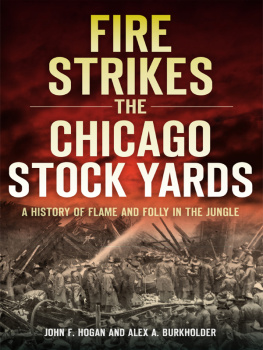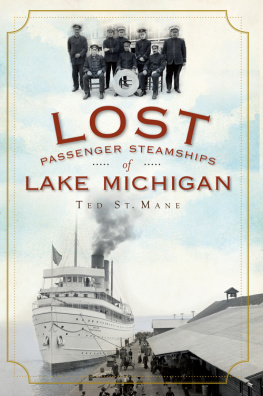Published by The History Press
Charleston, SC 29403
www.historypress.net
Copyright 2014 by John F. Hogan and Alex A. Burkholder
All rights reserved
Front cover, top row: All courtesy of the Ken Little Collection. Front cover, bottom: Courtesy of the Jim Regan Collection.
First published 2014
e-book edition 2014
ISBN 978.1.62585.302.8
Library of Congress Control Number: 2014953157
print edition ISBN 978.1.62619.747.3
Notice: The information in this book is true and complete to the best of our knowledge. It is offered without guarantee on the part of the author or The History Press. The author and The History Press disclaim all liability in connection with the use of this book.
All rights reserved. No part of this book may be reproduced or transmitted in any form whatsoever without prior written permission from the publisher except in the case of brief quotations embodied in critical articles and reviews.
CONTENTS
FOREWORD
When asked to write the foreword for Alex and Johns book, I was honored. The many captivating and interesting stories researched and written here are part of the true, but many times tragic, history of the city of Chicago.
As I read the book, I could not help but think of the lives of the many firefighters and civilians who were killed or injured and the families and co-workers who were affected by these sometimes-avoidable incidents. Truth in journalism is at its best in this book. It touches the dark side of human error, politics and the arrogance of those who make decisions of life and death before an incident occurs.
It hit home hard for me because my family was involved in an incident that changed our lives. On February 14, 1962, my father, Chief Thomas A. Hoff, and Chief Robert J. OBrien of the Chicago Fire Department were killed in the line of duty when the roof of a burning apartment building collapsed on them as they evacuated firefighters. My mother was left to raise six children, and that she did. But, as we learned, the building that killed my father and Chief OBrien had many fire and building code violations written against it, all tied up in the court system. Was this avoidable? In my mind, yes, it was.
I was fortunate enough to follow in the footsteps of my grandfather, father and brother as a Chicago firefighter. In my thirty-five-plus years as a member of the greatest fire department, I experienced many incidents with positive outcomes but also many tragic incidents, including being severely burned myself. In all of that, I found that history repeats itself, and we must learn from these events. We learn from past events to change the outcome of the next similar event.
I believe this book is a must-read not only for first responders but also all history buffs, especially those interested in Chicago history. It will capture your attention and your heart.
ROBERT HOFF
Retired Fire Commissioner
Chicago Fire Department
PREFACE
When we began work in 2010 on a book about Chicago Fire Department history, we envisioned a project about twice the length of this volume. After we finished, Ben Gibson, a senior commissioning editor at The History Press, recognized that we had, in fact, produced the contents of two separate booksone detailing the seemingly endless series of fires at the old Chicago Union Stock Yards and the other a compilation of additional spectacular events that have all but vanished from contemporary memory. The first installment became Fire Strikes the Chicago Stock Yards: Flame and Folly in the Jungle, which focused primarily on the disastrous fires of 1910 and 1934. This follow-up effort includes accounts of eighteen no-less-gripping incidents, as well as photos and captions of several more worth remembering.
As in the case of the earlier book, we benefitted greatly from the expert guidance of two men without peer in their knowledge of the Chicago Fire Department and its storied historyhistorians and archivists Ken Little, former senior fire alarm operator, and his longtime co-author and collaborator, Father John McNalis. They were exceedingly generous with time spent correcting text, ferreting out data and photos and offering encouragement. Father McNaliss help in assembling the image lineup proved invaluable. Both men are board members of the Fire Museum of Greater Chicago, our always reliable source of information and support.
We have been pestering Lyle Benedict and his staff at the Chicago Public Librarys Municipal Reference Collection for years and apparently havent worn out our welcome. Their professionalism and friendliness are deeply appreciated. Paula Everett, president of Chicagos Mount Greenwood Cemetery, has been most generous in sharing her files and photo collection from the tragic 1909 Temporary Crib Fire, many of whose victims lie buried at Mount Greenwood. Arcadia Publishing author and Roosevelt University professor William R. Host kindly shared photos from his historic collection. Jim Regan deserves special mention for his photo contributions. We felt honored when Bob Hoff, the highly respected former commissioner of the Chicago Fire Department, agreed to write the foreword.
As with previous projects, John has striven mightily to relieve his editor in chief and spouse, Judy E. Brady, of her sanity. Fortunately, he has yet to succeed. Thank you for the customary superb contributions, B.K. Likewise, Barbara Burkholder has endured another go-around with patience and good humor for which Alex offers his gratitude.
FIRE AND ICE
THE LAKE MICHIGAN CRIB INFERNO JANUARY 20, 1909
Lake Michigan in January, a mile and a half offshore, is forbidding territory, home of the mythical Hawk that swoops toward land on wings of ice. During particularly frigid winters, the lake can freeze over that far out and much farther. On the gloomy morning of January 20, 1909, the water was open a mile and a half out except for bobbing chunks of ice the size of small flotation devices. A light fog lay over the surface, seeming to defy a brisk south wind.
Off Seventy-first Street, man had invaded the domain of the Hawk by imposing an intermediate wooden intake crib, two stories above water level, six-sided and 88 feet across. The structure had been built on shore and towed into the lake on July 18, 1907. There it was sunk 33 feet to the sandy bottom and fitted into a base of vertically placed timbers extending 6 feet above the lake bottom. Likened to a Civil War fortress, it was built to withstand waves and icebut not fire. Approximately 106 workmen, many of them itinerants, called the intermediate crib home. Their job was to construct a tunnel to connect water distribution facilities on shore with a permanent intake crib farther out in the lake at Sixty-eighth Street, which was completed in 1908. A 23-foot-wide shaft, lined with steel to make it waterproof, extended downward from the temporary crib, through water and sand, into the Niagara limestone bedrock that was being blasted to form the tunnel some 135 feet below the lake surface. Work proceeded in both directions. By January 1909, the tunnel had advanced some 400 feet toward shore and 200 feet toward the permanent crib under miserable working conditions. The tunnel, 14 feet in diameter, was crowded with perspiring men breathing bad air, pumped in from above and made worse by the lingering odor of exploded dynamite. Water dripped continually. The entire project was being built at a cost of $1.7 million.










